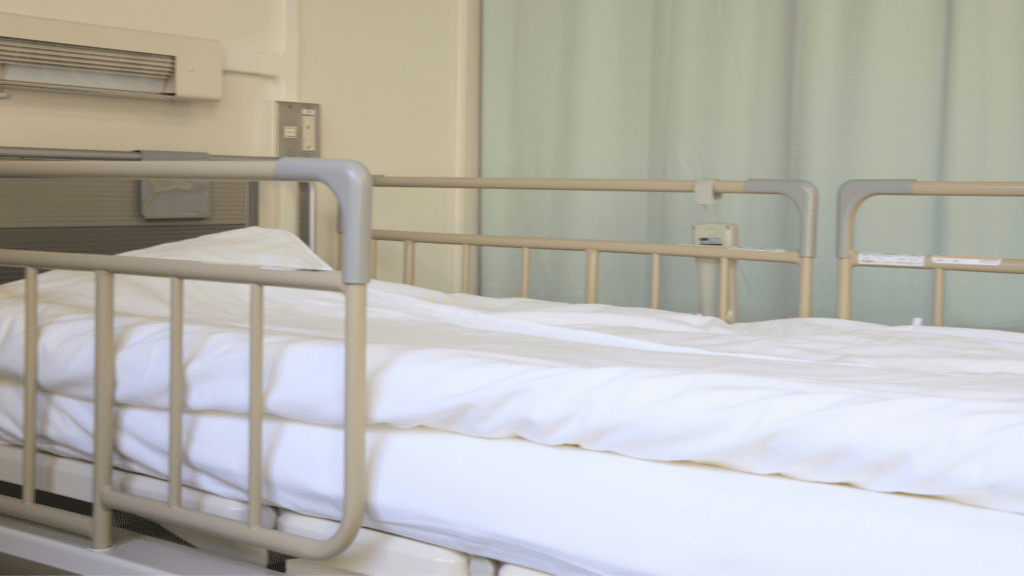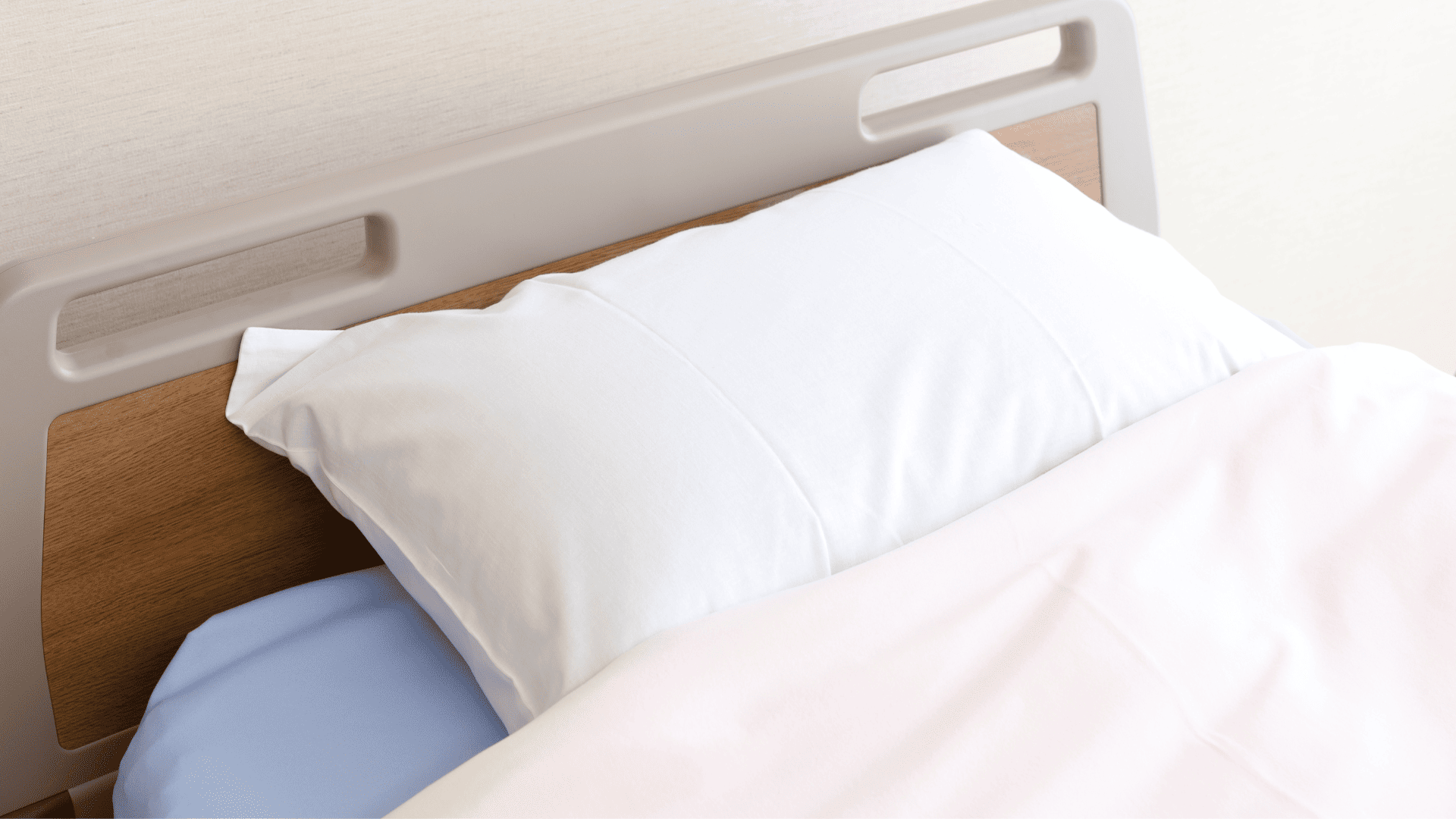Hospital beds are crucial tools in the healthcare industry, where every element is carefully crafted to maintain the well-being of patients. Patients can feel comfortable and restored in these specialised beds, which are an integral part of the healing process. Size is a major factor in determining patient comfort and medical efficiency among the many factors that go into designing the ideal hospital bed. In this in-depth look, we'll discover the standard size of a hospital bed—the measurements that strike a happy medium between patient comfort, practicality for medical use, and minimisation of wasted room.
Although hospital beds come in a variety of sizes to accommodate different patients' requirements, there is a normal size that serves as the basis for patient care. The standard size of a hospital bed has a significant impact on the caregiving experience in all settings, from traditional hospital wards to intensive care units and home healthcare settings.
The dimensions of a hospital bed are more than just numbers; they provide a glimpse into the careful considerations that guide doctors and manufacturers in creating beds that provide the best possible care for patients. The standard size of a hospital bed is a reflection of the all-encompassing philosophy of patient-centered care since it allows for a wide range of patients and staff members of varying heights and sizes to be comfortable.
Types of Adjustable Beds
While there are variations in hospital beds, all of them offer some degree of adjustability. Several factors, such as the patient's mobility, weight, and the nature of their disease or injury, may influence the choice of bed. Examples of common hospital beds are:
Full-Electric Hospital Beds
The full electric hospital bed is completely electrically operated and has several useful features. The patient or client can modify the position of the bed's head, foot, or any other part by themselves on this sort of hospital bed. To facilitate sitting up or lying down, the frame's height and the top's height can be adjusted with a remote control.
Semi-Electric Beds
Many people see semi-electric beds as a happy medium between fully electronic and manual beds. Adjusting the height of a semi-electric hospital bed requires the use of manual controls, such as a hand crank, but the head and foot sections can be adjusted using a portable remote control.
Bariatric Beds
Bariatric hospital beds are built to accommodate patients who weigh more than the average. The difference between a fully electric hospital bed and an electric bariatric bed is simply that the latter can support individuals weighing more than 500 pounds. These high duty mattresses are wider than standard hospital beds and also stronger and more durable.
Different Hospital Bed Sizes
As a location for patients to rest and recoup after medical treatment, hospital beds play a crucial role in the healthcare system. When someone is hospitalised, how long does one stay in bed? The response could shock you. Although hospital beds come in a wide range of sizes and designs, the standard dimensions are 80 inches in length and 36 inches in width. However, there are hospital beds that can accommodate patients up to 90 inches in length. While most hospital beds are around 80 inches in length, their widths vary widely. A good illustration of this is the adjustable height of some hospital bed rails. The standard width for a bed of this type is 38 inches. All hospital beds, no matter how big or small, are designed to do the same thing: make patients feel at ease and safe while they recover.
According to AvaCare Medical, the most widely used manual and electric hospital beds are also among the best available. A standard hospital bed in the United States is around 80 inches in length and 36 inches in width. The maximum weight limit for an extra-large hospital bed varies, but it can be as high as 1,000 pounds. Bariatric ward beds are larger and more spacious than standard hospital beds. Patients who are taller than average or who have a higher body mass index may benefit more from a bariatric bed than a standard hospital bed. Most people believe that a hospital bed with a standard size frame is the same as a standard twin or full bed. Bariatric beds' dimensions are based on the size of the mattress used.
Make sure the mattress you buy is designed to fit the bed frame you intend to use. Consider getting bed rails as an alternate option. AvaCare Medical's top priority is providing you with accurate hospital bed specifications.
How tall of a hospital bed can you make it? A typical hospital bed has an adjustable height range of 21–29 inches (from the floor to the top of the mattress).
The hospital bed is the most vital piece of medical equipment for nurses to use, as it is the most familiar with patients and their care. Although 91 centimetres (36 inches) in width is typical for hospital beds, 102 centimetres (40 inches) and 127 centimetres (50 inches) are also common for other types of beds.
Hospital beds can be any length between 74 and 88 inches. Some beds may be longer than 80 inches, but this is the standard. Therefore, both larger and smaller beds are offered, depending on the guest's preference or practical needs. The Medline Altera Long Term Care Bed is an example of a completely electric, fully adjustable bed designed for long-term use.
There are a variety of hospital bed sizes, but one common one is 36 inches broad by 80 inches long.
Which Bed Size Is Right for Me?
The patient should be taken into account when determining the appropriate bed size. The patient's body mass index (BMI) is the first consideration in determining the optimal dimension. A normal width mattress of 36 inches is required for a patient with a body mass index of 45 or less to fit into the bed easily and comfortably. They need a 39-inch wide bed to feel comfortable. The bed frame and mattress can be easily extended for customers of greater height.
There are other elements at play, such as the medical necessity of the bed. Does the patient have a condition that necessitates a longer or broader hospital bed than what is typically provided? Can they get bedsores easily? These issues can lengthen and complicate recoveries, but a hospital bed that is the right size can accommodate patients and avoid complications.
What Are The Advantages Of Adjustable Hospital Beds?
Hospitals and medical clinics are increasingly using adjustable beds. Adjustable beds provide much more than just comfort when it comes to helping people recover from illness or accident. Here are some of the key advantages of adjustable hospital beds as well as some buying suggestions for those on the lookout for the best goods, given the increasing number of hospital bed providers offering an increasingly wide selection of hospital beds.
Comfort
Comfort is of the utmost importance while you are hospitalised for treatment of an illness or accident. Hospital beds that are easily adjusted to the user's prefered position are available for those who need them. Once you've discovered the most comfortable position, you may put your full attention on healing while the head and feet sections can be adjusted whenever you choose. Patients spend a lot more time in bed than usual when hospitalised, so making sure they are relaxed and at ease is crucial.
Independence
It's distressing to feel like you need help from others to accomplish even the most basic things, like moving your feet or sitting up, if you've recently undergone surgery, been wounded in an accident, or have underlying health concerns that impede your mobility or coordination. Patients can get up, down, and all around on their own time thanks to the versatility of today's hospital beds.
Flexibility
After a while, it's helpful to be able to shift your body and modify your position, even if you're perfectly content sitting up or lying down. Sitting or lying in one position for too long increases the risk of developing pressure sores and other discomforts. Position changes in an adjustable bed require very little physical effort. A lot of individuals prefer to have their beds set up so that they may chat with guests, drink tea, and watch TV in the morning, then recline in the afternoon for a nap and sleep through the night.
Mobility
The ability to easily and quickly change the height of an electric hospital bed is one of its most useful features. Patients with restricted mobility and range of motion might benefit greatly from a lowered bed, since this makes getting in and out of bed much easier.
Gains for Caretakers
Comfortable and self-sufficient patients are easier to care for on adjustable beds, which also benefit the carers. Helping patients get out of bed, for example, requires far less physical effort when electric controls allow for effortless bed adjustments without exertion.
Conclusion
Hospital beds are essential tools in the healthcare industry, designed to maintain patient comfort and medical efficiency. The standard size of a hospital bed is crucial, as it strikes a balance between comfort, practicality for medical use, and minimisation of wasted room. The dimensions of a hospital bed are more than just numbers; they provide a glimpse into the careful considerations that guide doctors and manufacturers in creating beds that provide the best possible care for patients.
There are various types of adjustable beds, such as full-electric, semi-electric, and bariatric beds. Full-electric beds are electrically operated and have various features, while semi-electric beds are a medium between fully electronic and manual beds. Bariatric beds are larger and more spacious than standard hospital beds, catering to patients with higher body mass indexes.
Hospital beds can be any length between 74 and 88 inches, with some beds being longer than 80 inches. Both larger and smaller beds are offered, depending on the guest's preference or practical needs. The Medline Altera Long Term Care Bed is an example of a completely electric, fully adjustable bed designed for long-term use.
When determining the appropriate bed size, the patient's body mass index (BMI) is the first consideration. A normal width mattress of 36 inches is required for a patient with a BMI of 45 or less to fit comfortably in the bed, and the bed frame and mattress can be easily extended for customers of greater height. Hospital beds play a crucial role in patient recovery and recovery. They provide comfort, independence, flexibility, mobility, and gains for caregivers. Adjustable beds allow patients to adjust their positions to their preferred positions, allowing them to focus on healing and recovery. They also offer independence, allowing patients to move their feet or sit up independently, reducing the need for assistance during basic tasks. Flexibility allows patients to change their position without requiring physical effort, making it easier for them to adjust their bed. Electric controls also make bed adjustments easier, benefiting caregivers by requiring less physical effort. Overall, adjustable hospital beds offer numerous advantages for patients and caregivers, making them a valuable addition to any hospital bed provider's offerings.
Content Summary:
- Hospital beds are crucial tools in the healthcare industry, where every element is carefully crafted to maintain the well-being of patients.
- Size is a major factor in determining patient comfort and medical efficiency among the many factors that go into designing the ideal hospital bed.
- In this in-depth look, we'll discover the standard size of a hospital bed—the measurements that strike a happy medium between patient comfort, practicality for medical use, and minimisation of wasted room.
- Although hospital beds come in a variety of sizes to accommodate different patients' requirements, there is a normal size that serves as the basis for patient care.
- The standard size of a hospital bed has a significant impact on the caregiving experience in all settings, from traditional hospital wards to intensive care units and home healthcare settings.
- The dimensions of a hospital bed are more than just numbers; they provide a glimpse into the careful considerations that guide doctors and manufacturers in creating beds that provide the best possible care for patients.
- The standard size of a hospital bed is a reflection of the all-encompassing philosophy of patient-centered care since it allows for a wide range of patients and staff members of varying heights and sizes to be comfortable.
- Bariatric hospital beds are built to accommodate patients who weigh more than the average.
- These high duty mattresses are wider than standard hospital beds and also stronger and more durable.
- As a location for patients to rest and recoup after medical treatment, hospital beds play a crucial role in the healthcare system.
- Although hospital beds come in a wide range of sizes and designs, the standard dimensions are 80 inches in length and 36 inches in width.
- According to AvaCare Medical, the most widely used manual and electric hospital beds are also among the best available.
- A standard hospital bed in the United States is around 80 inches in length and 36 inches in width.
- The maximum weight limit for an extra-large hospital bed varies, but it can be as high as 1,000 pounds.
- Bariatric ward beds are larger and more spacious than standard hospital beds.
- Patients who are taller than average or who have a higher body mass index may benefit more from a bariatric bed than a standard hospital bed.
- Most people believe that a hospital bed with a standard size frame is the same as a standard twin or full bed.
- Bariatric beds' dimensions are based on the size of the mattress used.
- Make sure the mattress you buy is designed to fit the bed frame you intend to use.
- Consider getting bed rails as an alternate option.
- AvaCare Medical's top priority is providing you with accurate hospital bed specifications.
- The hospital bed is the most vital piece of medical equipment for nurses to use, as it is the most familiar with patients and their care.
- Although 91 centimetres (36 inches) in width is typical for hospital beds, 102 centimetres (40 inches) and 127 centimetres (50 inches) are also common for other types of beds.
- Hospital beds can be any length between 74 and 88 inches.
- Therefore, both larger and smaller beds are offered, depending on the guest's preference or practical needs.
- There are a variety of hospital bed sizes, but one common one is 36 inches broad by 80 inches long.
- The patient should be taken into account when determining the appropriate bed size.
- The patient's body mass index (BMI) is the first consideration in determining the optimal dimension.
- A normal width mattress of 36 inches is required for a patient with a body mass index of 45 or less to fit into the bed easily and comfortably.
- They need a 39-inch wide bed to feel comfortable.
- The bed frame and mattress can be easily extended for customers of greater height.
- There are other elements at play, such as the medical necessity of the bed.
- Does the patient have a condition that necessitates a longer or broader hospital bed than what is typically provided?
- These issues can lengthen and complicate recoveries, but a hospital bed that is the right size can accommodate patients and avoid complications.
- Hospitals and medical clinics are increasingly using adjustable beds.
- Adjustable beds provide much more than just comfort when it comes to helping people recover from illness or accident.
- Here are some of the key advantages of adjustable hospital beds as well as some buying suggestions for those on the lookout for the best goods, given the increasing number of hospital bed providers offering an increasingly wide selection of hospital beds.
- Comfort is of the utmost importance while you are hospitalised for treatment of an illness or accident.
- Hospital beds that are easily adjusted to the user's prefered position are available for those who need them.
- Position changes in an adjustable bed require very little physical effort.
FAQs About Medical Bed
This makes it easier to get the patient in and out of bed, and it means hospital beds come in basic size options. The size of a standard hospital bed measures 36″ wide and 80″ in length, measured from headboard to footboard.
To fit a mattress onto a hospital bed, it must be 39-inch by 80-inch – this is a Twin XL. Other regular mattress sizes will not meet these size standards; twin mattresses, for example, are typically 39-inches by 75-inches, leaving a lot of room at the ends.
A full-size hospital bed is 53 to 54 inches wide. Full hospital beds are significantly wider than twin size adjustable beds, which are approximately 38 inches wide. Our full-size hospital beds are available in two length configurations, 80 inches and the super-long 84 i
Standard hospital beds are usually 80 inches long and 36 inches wide, which is roughly the same size as a dorm bed which is Twin-XL. Even though they're the same size as dorm sheets, the level of comfort can be entirely different.
What's the difference between them? Twin beds, which measure 39” wide, are slightly smaller than double beds, which are 54” across. Both sizes are 75” long. Although the titles suggest that double beds are twice as wide as twin beds, there's only a 15-inch distinction between them.


